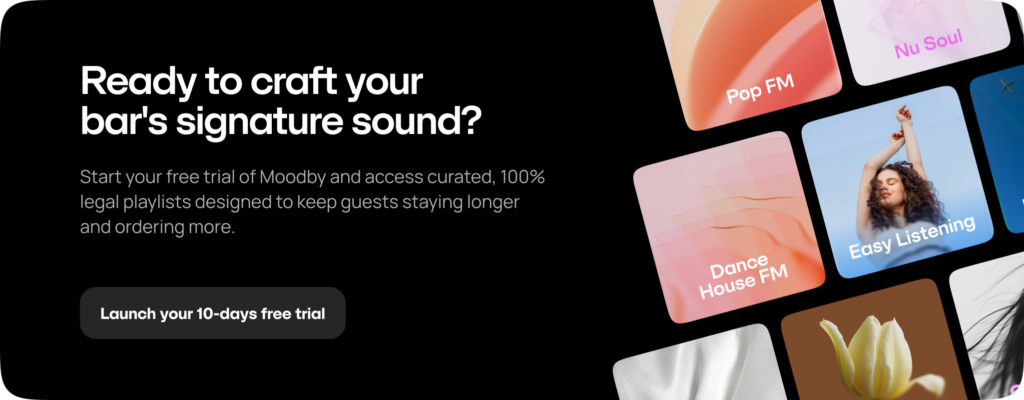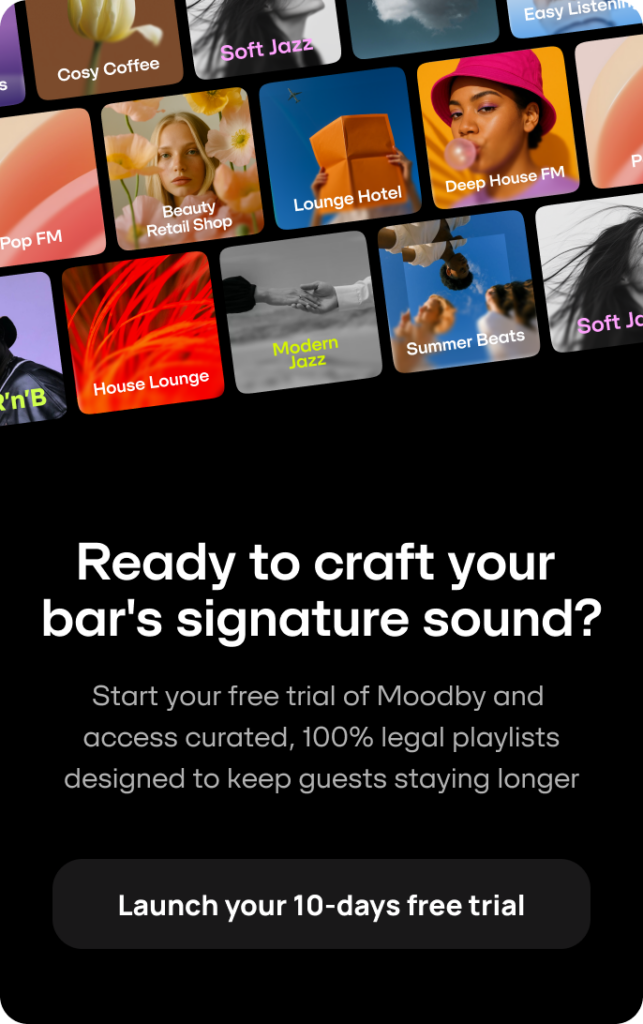A practical guide to selecting background music for bars and pubs

You’ve got enough to handle: staff, stock, customers, compliance… Music? It should be the easy part. But in reality, it’s where a lot of bars make silent mistakes that later come with loud consequences.
You’ve probably tried a few options already. Let’s walk through them — and then show you one that’s simple, legal, and actually feels good.


Why background music isn’t just background
Studies show that the right music can increase dwell time and even boost drink sales. Tempo, volume, genre — they all shape the energy of your space. But it’s not just about vibe — it’s about permission.
Using Spotify, Apple Music, or YouTube in a bar is like pouring drinks without a license. These platforms are meant for personal use, not public performance. That means you’re unprotected — and yes, fines happen.
Common ways bars choose music. And their hidden costs
Have a look at the examples of what music will suit different types of bars and pubs.
1. Personal Streaming Accounts (Spotify, Apple Music)
⚡Effort: Low
💰Cost: Medium
⚠️Risks: Very High
These platforms are not licensed for commercial use. No certificate. If an inspector walks in — you’re exposed.
2. Hire a DJ or Curator
⚡Effort: High
💰Cost: High
⚠️Risks: Medium
Works for some venues, but only if you have the budget. Still requires separate licensing for music rights.
3. Business Music Platforms with Popular Tracks (e.g., Soundtrack, Mood Media, Soundmachine)
⚡Effort: Medium
💰Cost: High
⚠️Risks: Medium
You’ll still need to pay local CMOs (PRS, GEMA, ZAIKS, etc.) on top of your subscription.
4. Royalty-Free Music Services (like Moodby Play)
⚡Effort: Low
💰Cost: Low
⚠️Risks: None
One fixed payment. You get music + certificate + peace of mind.
Moodby Play — for when you’re done with workarounds
A music service built for commercial use. Not just with great playlists — but with the legal framework to back them up.
Moodby Play is a royalty-free music service made for bars, cafes, salons and anyone who just wants music that works — without legal headaches.
- One fixed subscription
- 500+ hours of curated music
- No CMOs fees
- Instant certificate of compliance
- Works offline & on any device
It’s not about being fancy. It’s about being free from fear. Check it for free with Moodby Play.
What it feels like to get it right
You open your bar, and the music’s just playing. No awkward silences. No skipped ads.
Customers stay longer. The energy builds naturally. You don’t think about rights or fines — because you don’t need to.
That’s what we offer. Legal peace of mind — that sounds good.

